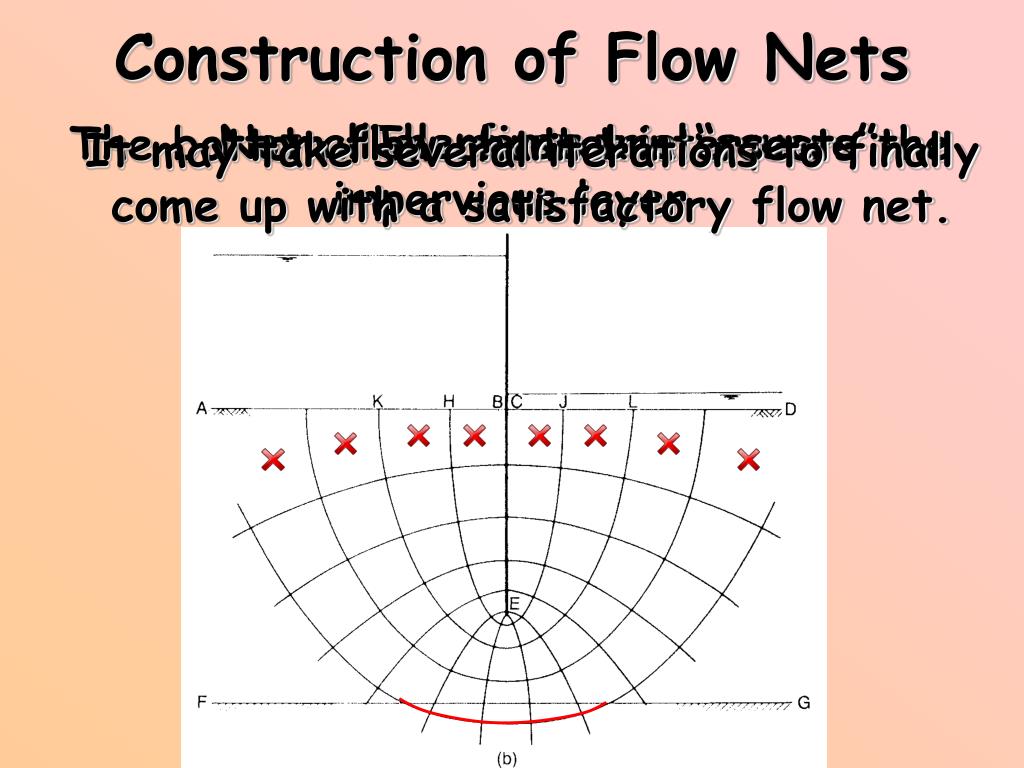
PPT FLOW NETS PowerPoint Presentation, free download ID3977795
A flow net is a graphical representation of two-dimensional steady-state groundwater flow through aquifers.. Construction of a flow net is often used for solving groundwater flow problems where the geometry makes analytical solutions impractical. The method is often used in civil engineering, hydrogeology or soil mechanics as a first check for problems of flow under hydraulic structures like.
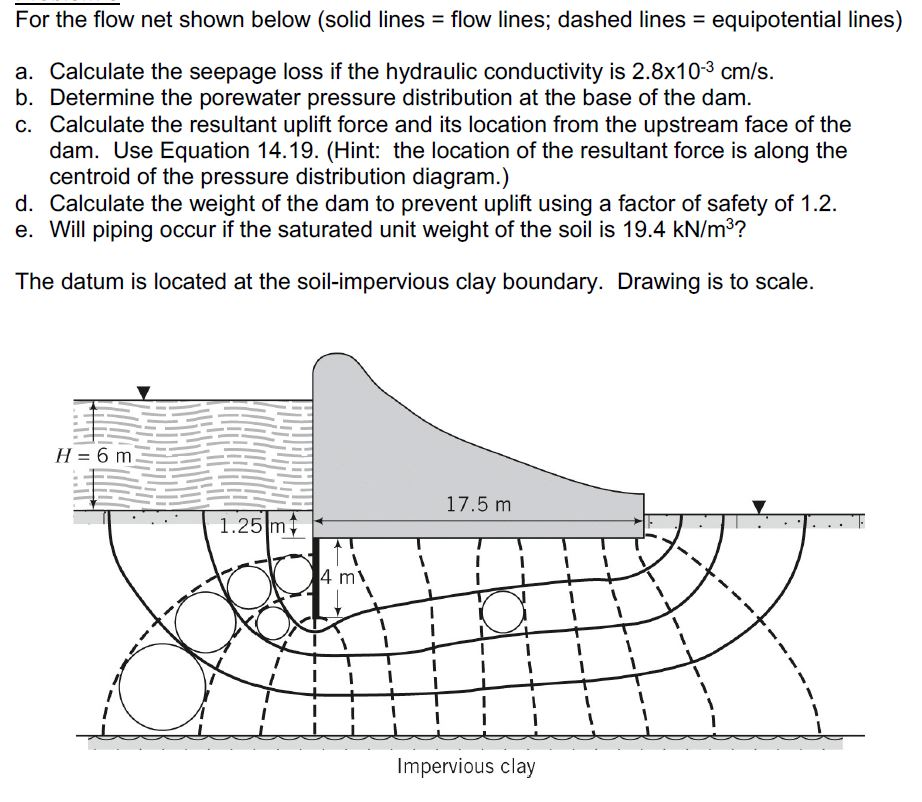
Solved For the flow net shown below (solid lines = flow
The (ΑΗ) part is approximately drawn. The flow net is completed by taking into account the boundary conditions below. 1) BA (h ολ = H) is the first equipotential line. 2) ΓΘ (h ολ = 0) is the last equipotential line. 3) ΑΘ is the first flow line. 4) ΒΓ is the last flow line.
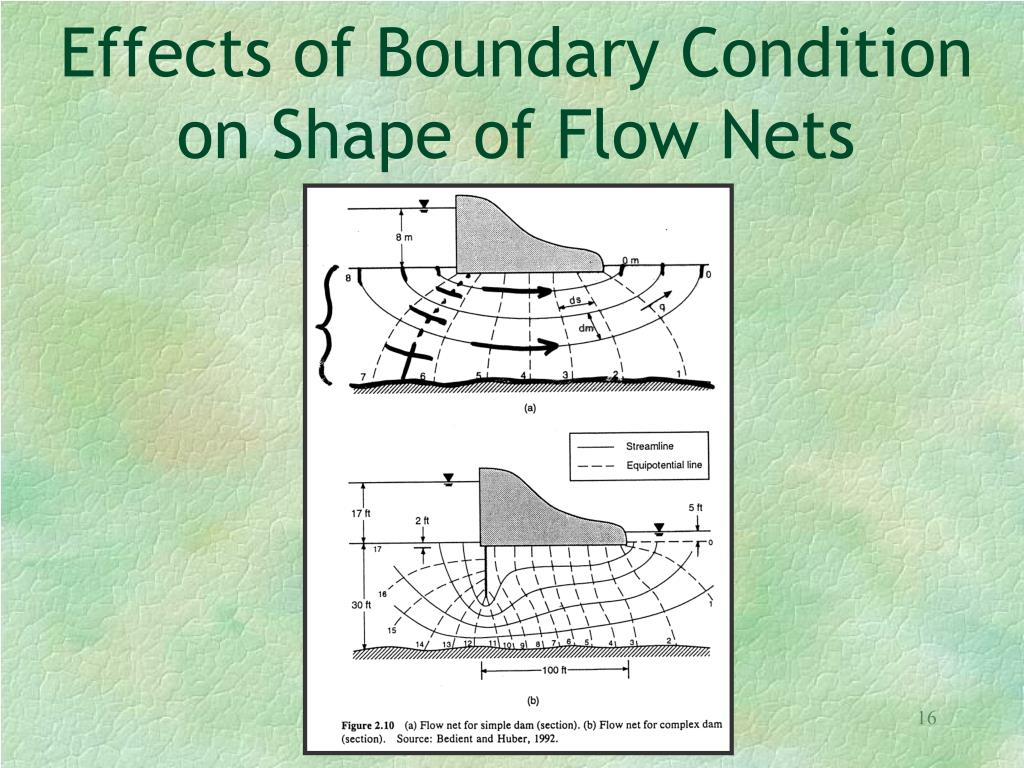
PPT Flow Nets PowerPoint Presentation, free download ID5230267
The common form of Laplace's equation for the flow of water through two-dimensional soils is: kx(∂2H/∂x2) + kz(∂2H/∂z2) = 0 ——- (1) where H is the total head and kx and kz are the hydraulic conductivities in the X and Z directions. The condition that the changes in hydraulic gradient in one direction are balanced by changes in.
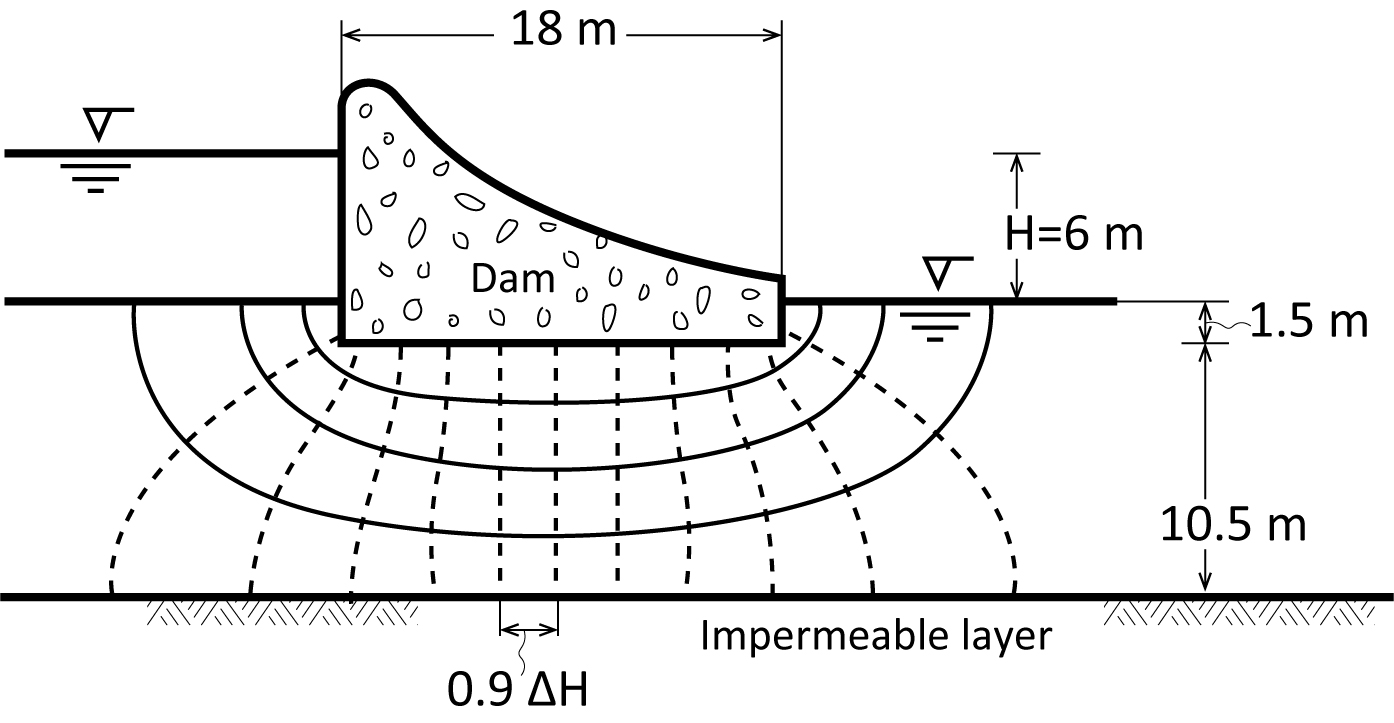
3.3. Graphical Generation of Flow Nets
In the flow net there are 4-7 flow channels and 15 equipotential drops. The seepage is given by: q=kh 4-7 = x x = 3-1 x 10-5m3/s (per m) The pore water pressure is calculated at the points of intersection of the equipotentials with the base of the dam. The total head at each point is obtained from the flow net and the elevation head from the.
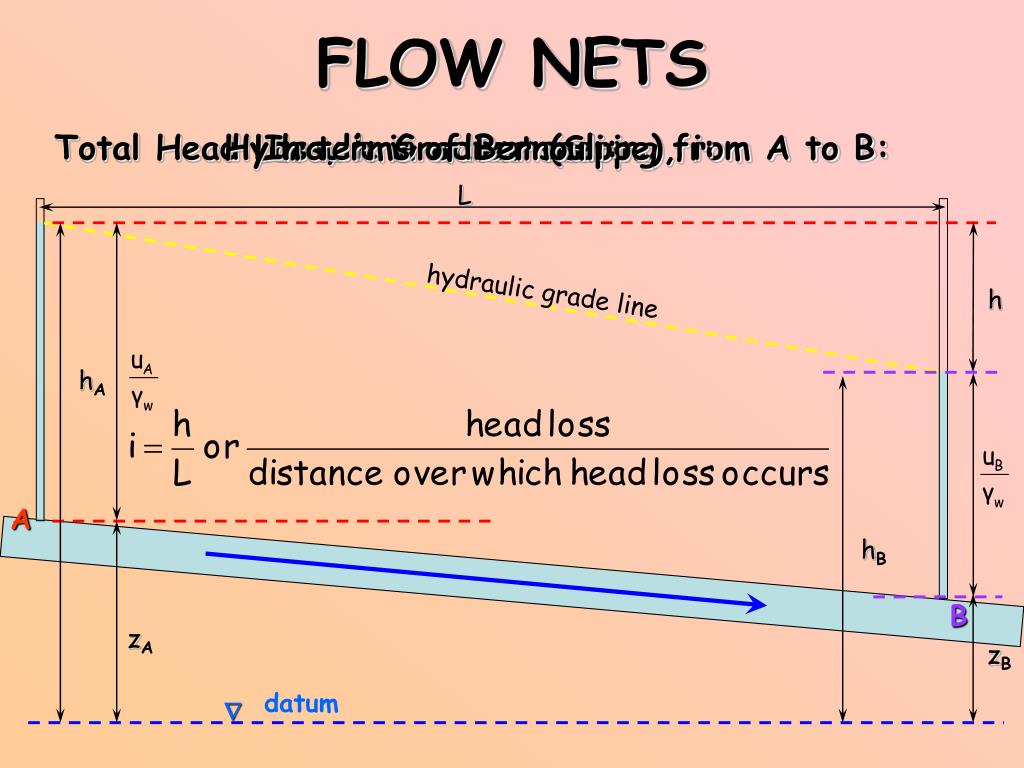
PPT FLOW NETS PowerPoint Presentation, free download ID3977795
This video briefly explains the fundamentals of flow nets and shows how to draw a flow net to estimate the water seepage under engineering structures. Watch.

The completed flow net for the dam shown below
Each flow tube will represent the same discharage: Q = KiA. Procrastination is common. It is best to "dive in" and begin drawing. Just keep an eraser handy and do not hesitate to revise! Draw a very simple flow net: H. H. equipotential lines parallel constant head boundaries. flow lines parallel no-flow boundaries.
[Solved] Use the provided flow nets to calculate the flow rate
A flow net is a graphical representation of the flow of groundwater through a porous medium, such as soil or rock.It consists of a network of flow lines and equipotential lines that intersect each other at right angles. Flow nets are commonly used to analyze seepage and evaluate the flow characteristics in geotechnical and hydrogeological.

Flow Net YouTube
1. Discharge. The rate of flow can be determined using a flow net. The flow per unit length is obtained as, q/L = k.H. (nf/nd), where nf is the number of flow lines, nd is the number of equipotential lines, H is the total head causing flow, and k is the coefficient of permeability of the soil. 2.
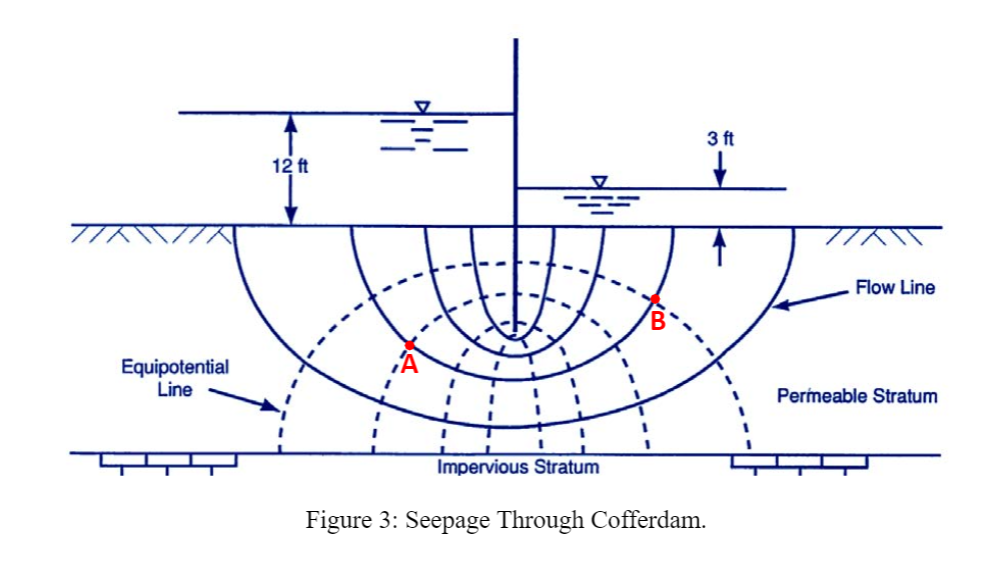
Solved For the flow net depicted in Figure 3, the
If the flow net is drawn with 2 flow tubes, 9 head drops will be needed to create curvilinear squares, for a ratio of 2/9 = 0.2222. If 5 flow tubes are used then 23 head drops will produce curvilinear squares, for a ratio of 5/28 = 0.217. These small differences in the ratio of flow tubes to head drops illustrate that drawing a flow net with.

Typical computed flow net in a heterogeneous foundation of dam
A groundwater flow net consists of two families of intersecting lines: equipotential lines, which connect locations of equal hydraulic head, and flow lines, which show paths of groundwater flow. Together, these two sets of lines provide a visual, two-dimensional representation of the groundwater conditions under steady state (that is, neither set of lines change with […]
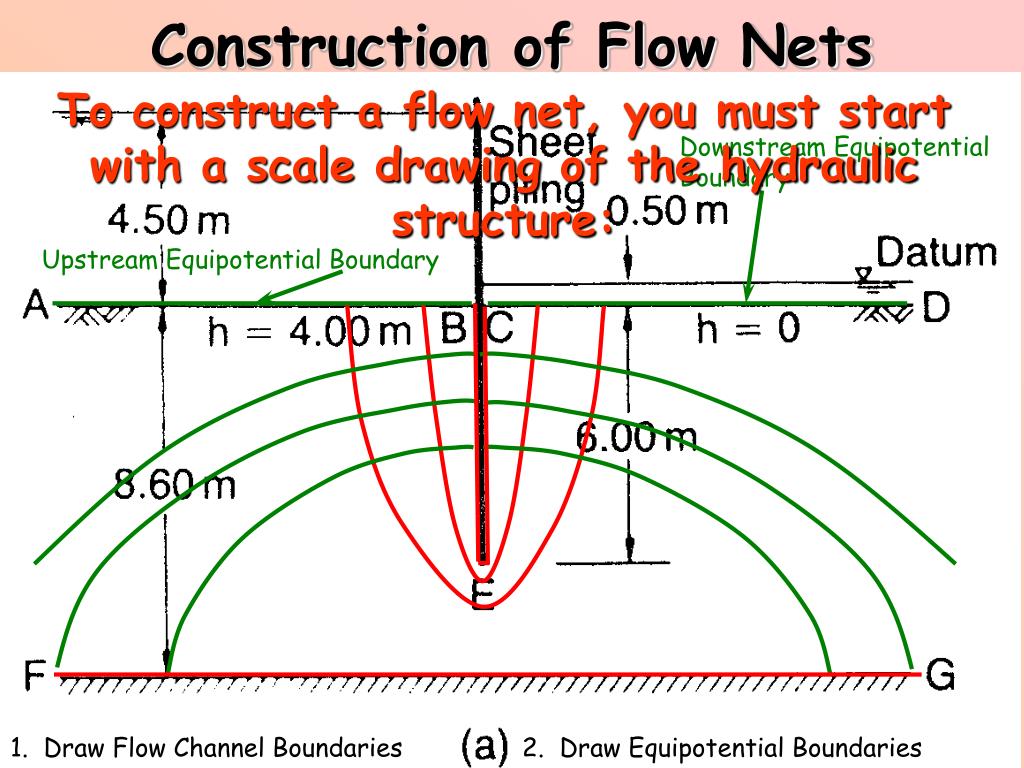
PPT FLOW NETS PowerPoint Presentation, free download ID3977795
Chapter 59 - Flow NetTo analyse the multi-dimensional flow of water inside the soil and to obtain solutions to the engineering problems such as to estimate t.
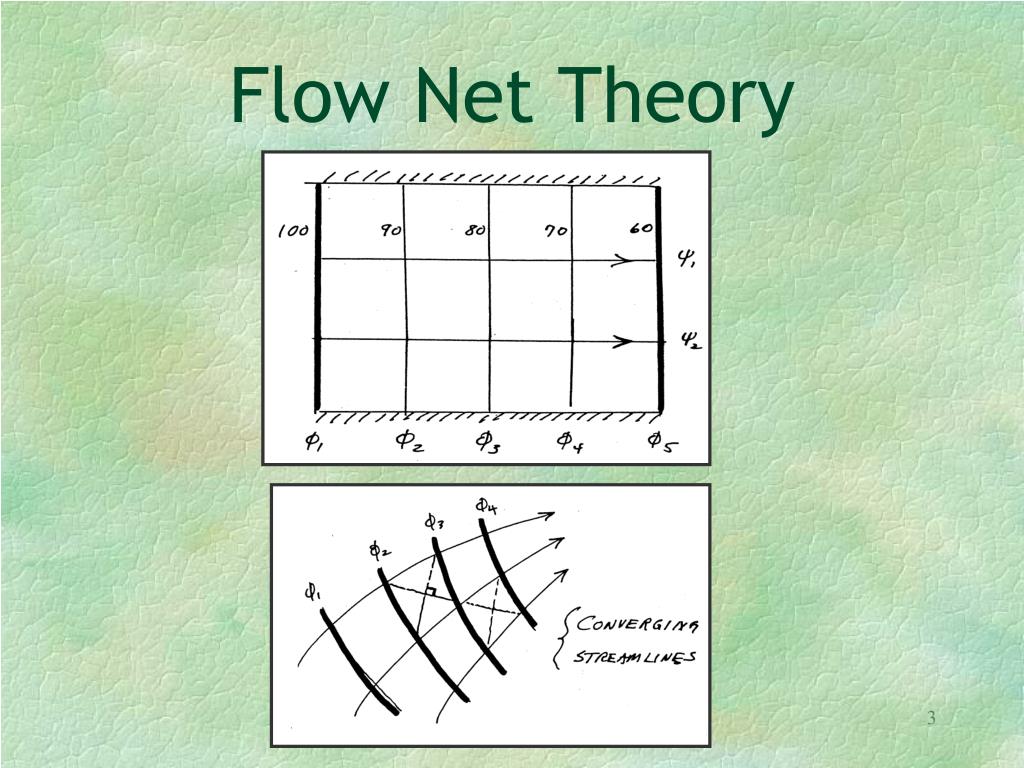
PPT Flow Nets PowerPoint Presentation, free download ID5230267
A graphically constructed flow net cannot be drawn for a heterogeneous system, so a numerical simulation of flow is used to demonstrate the impact of a lens of lower and higher hydraulic conductivity on the system of Figure 16a, as shown in Figure 17. As in Figure 16, the same volumetric flow rate enters the aquifer on the left side and exits.

How To Draw Flow Nets Netwhile Spmsoalan
A flow net and equipotential lines are used together for analysis and design of seepage problems. A flow net is a network of intersecting flow lines and equipotential lines that indicate the direction and magnitude of seepage flows through a porous soil mass. To construct a flow net and equipotential lines for a seepage analysis, the following.
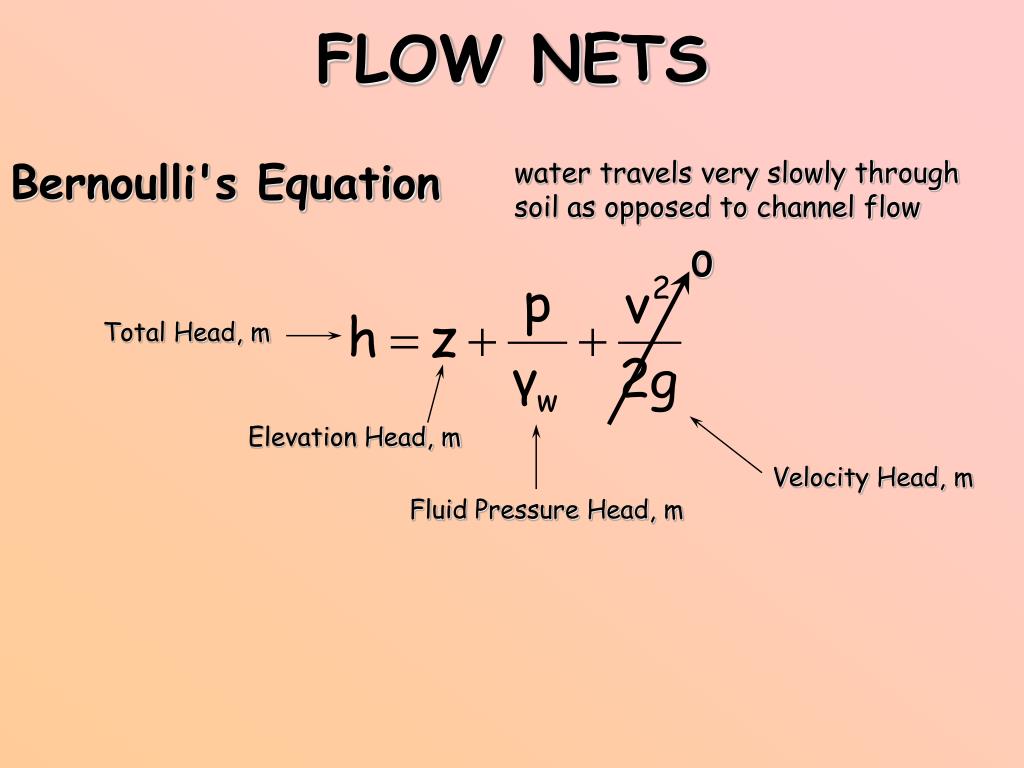
PPT FLOW NETS PowerPoint Presentation, free download ID3977795
Denmark's Queen Margrethe II has announced her surprise abdication in a new year TV address. She will formally step down on 14 January, which will be 52 years to the day since she became queen. "I.

3.3. Graphical Generation of Flow Nets
In this video I have discussed characteristics of Flownet and its uses under the following heads;What is Flownet in soil mechanics?The practical application.

Chapter 8 Seepage 5 Flow net basics (3) and Example 2 YouTube
A flow net consists of two families of intersecting lines: equipotential lines, which connect locations of equal hydraulic head and flow lines that show paths of groundwater flow as shown in Figure 3. An impermeable dam is holding back a reservoir of water in Figure 3. Water seeps from the upstream reservoir into the underlying porous material.